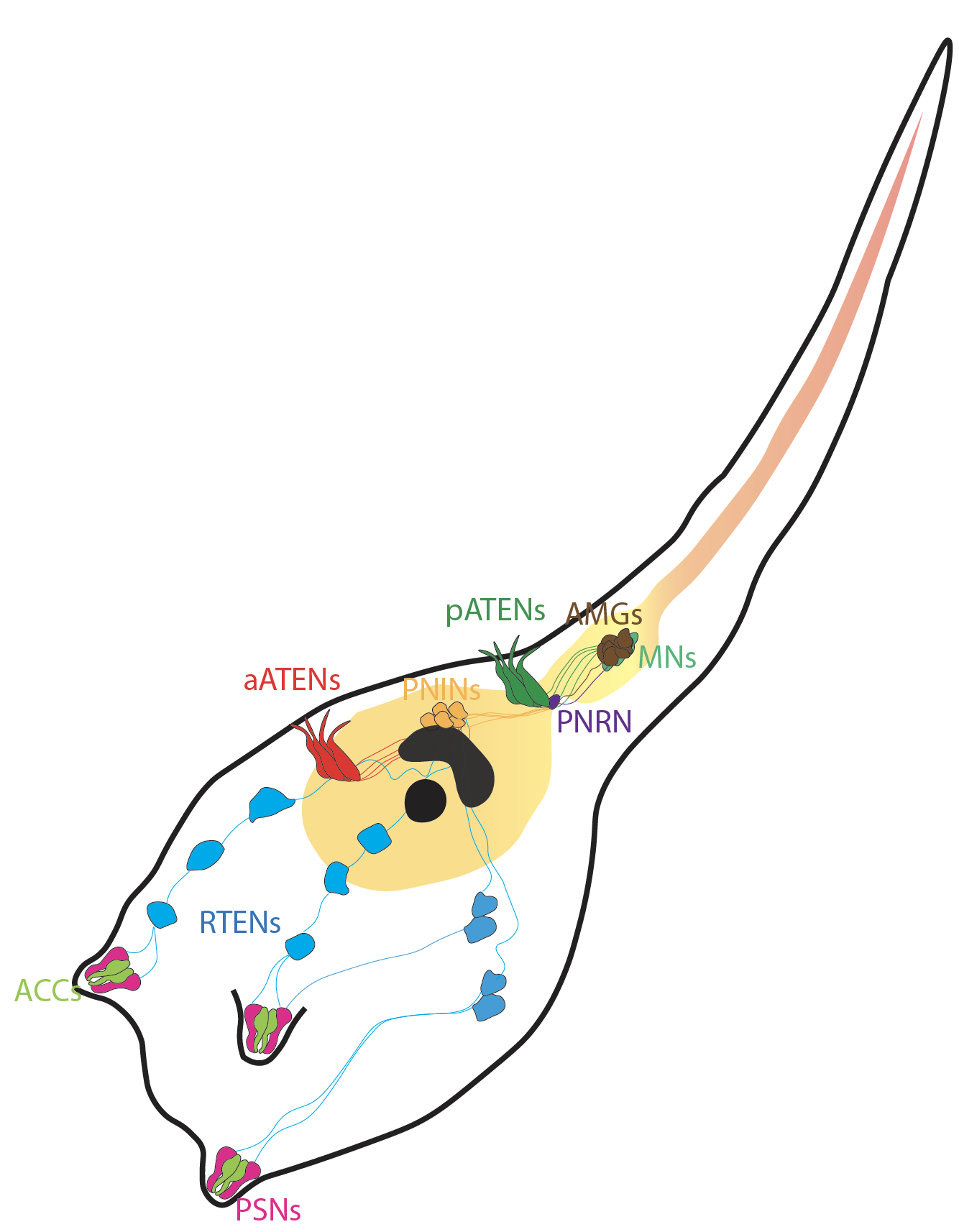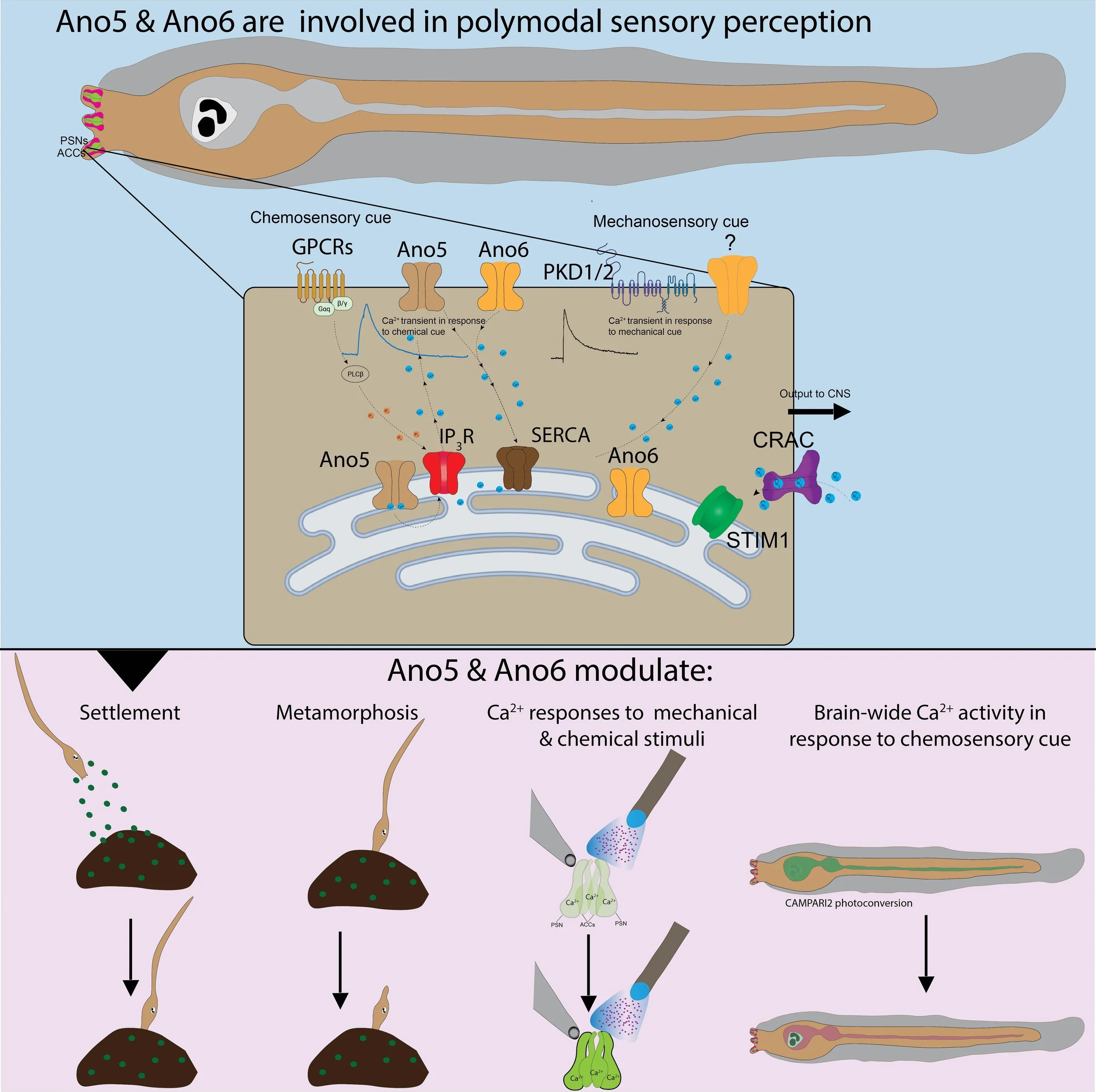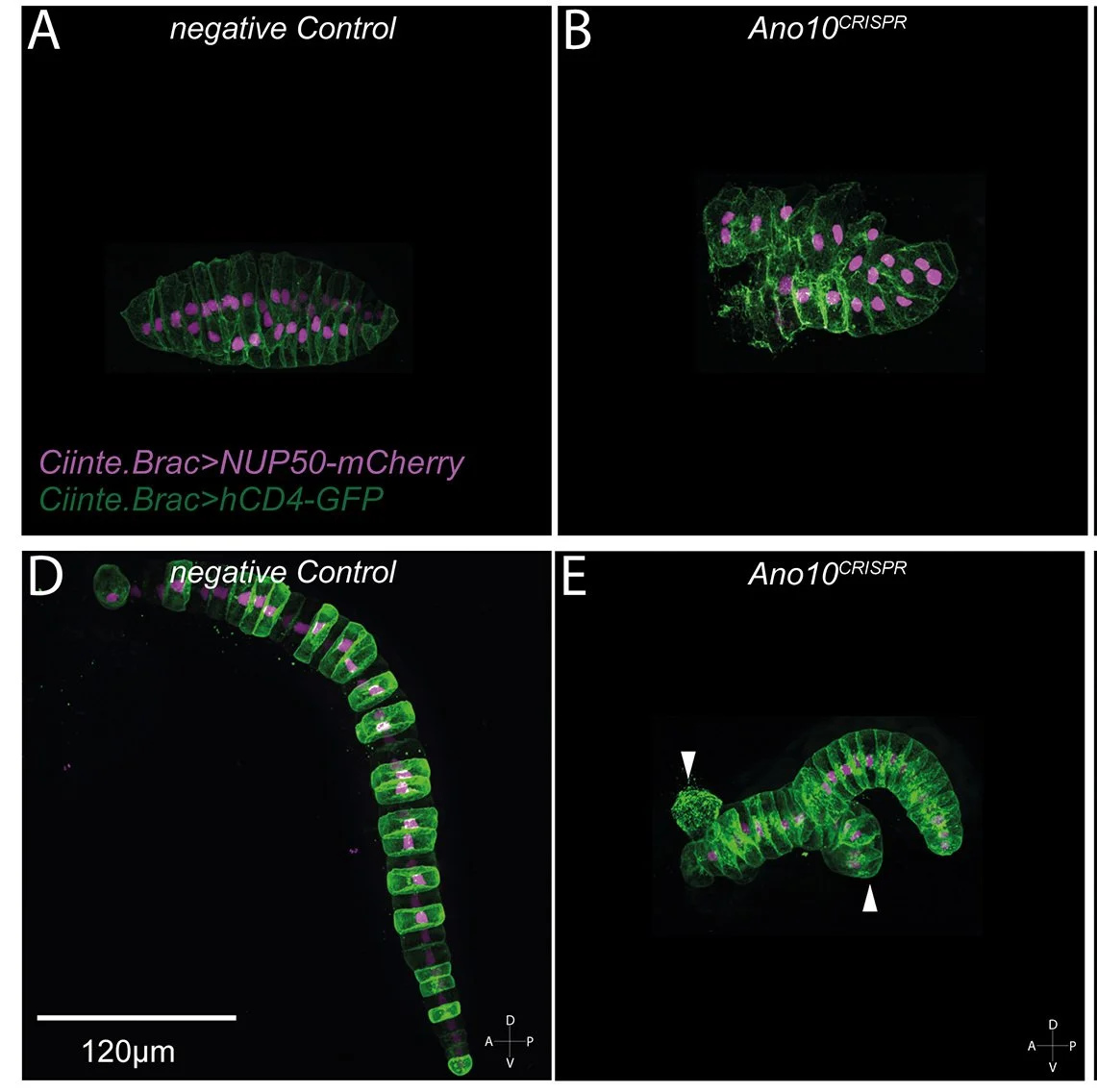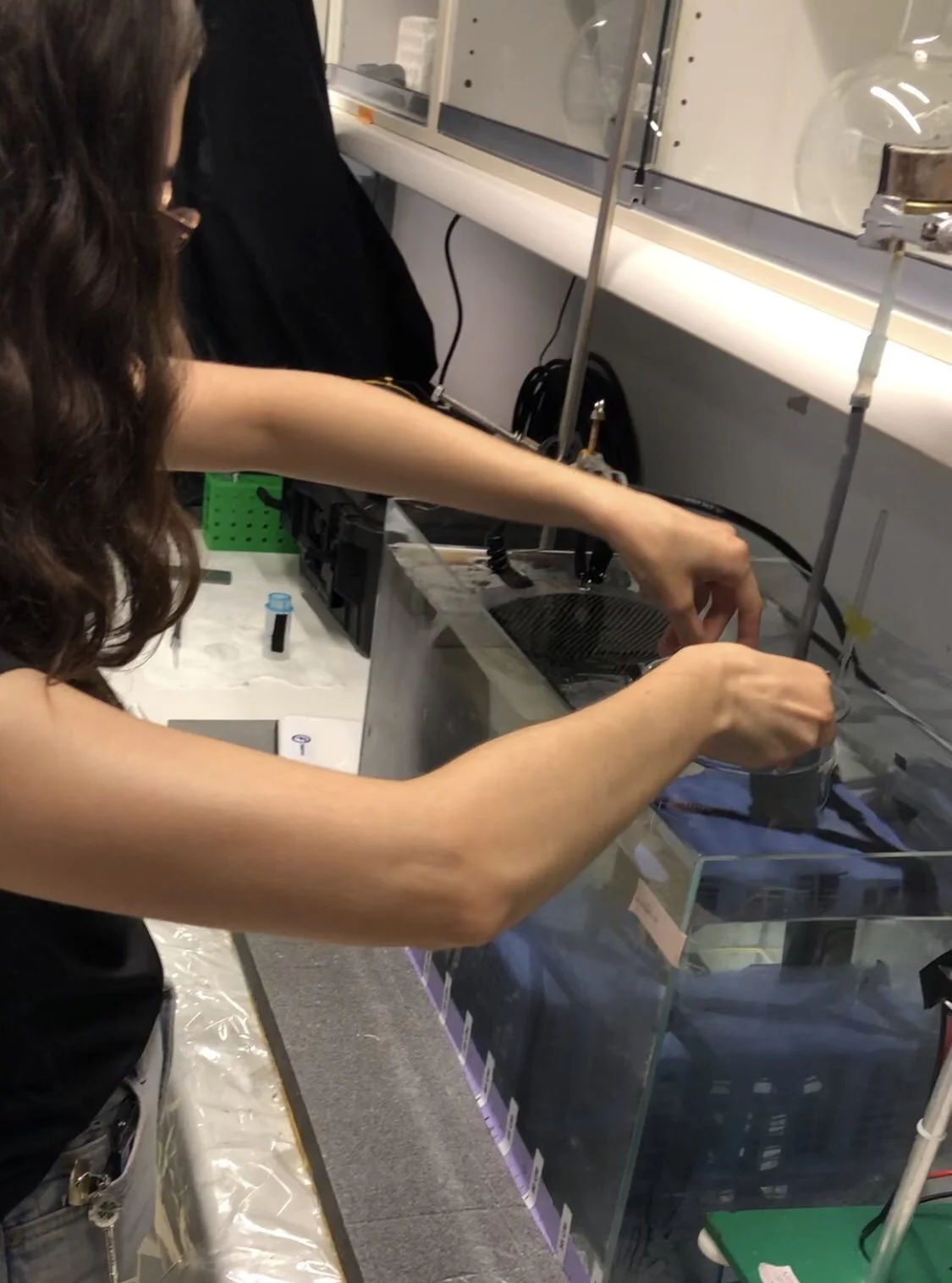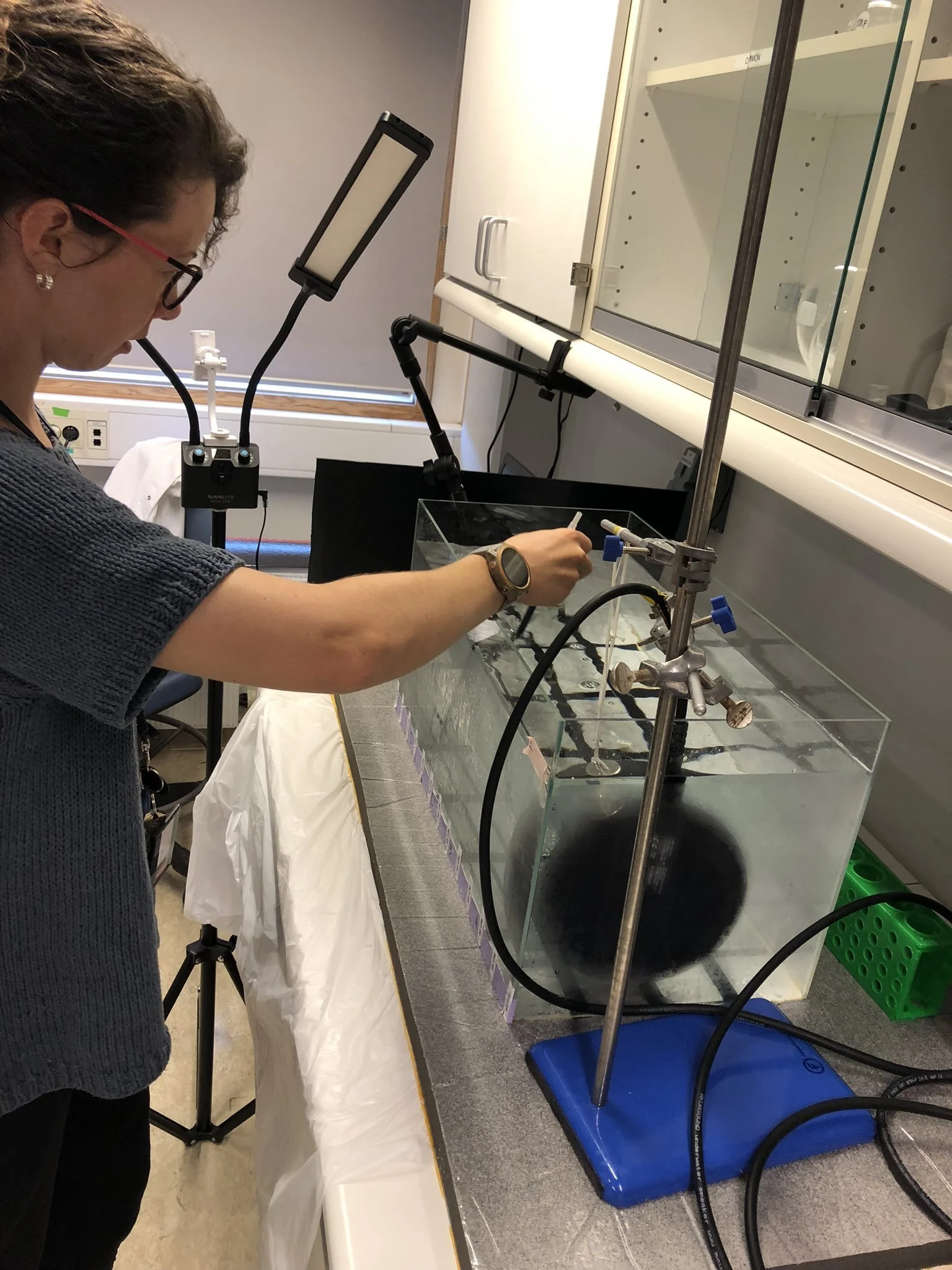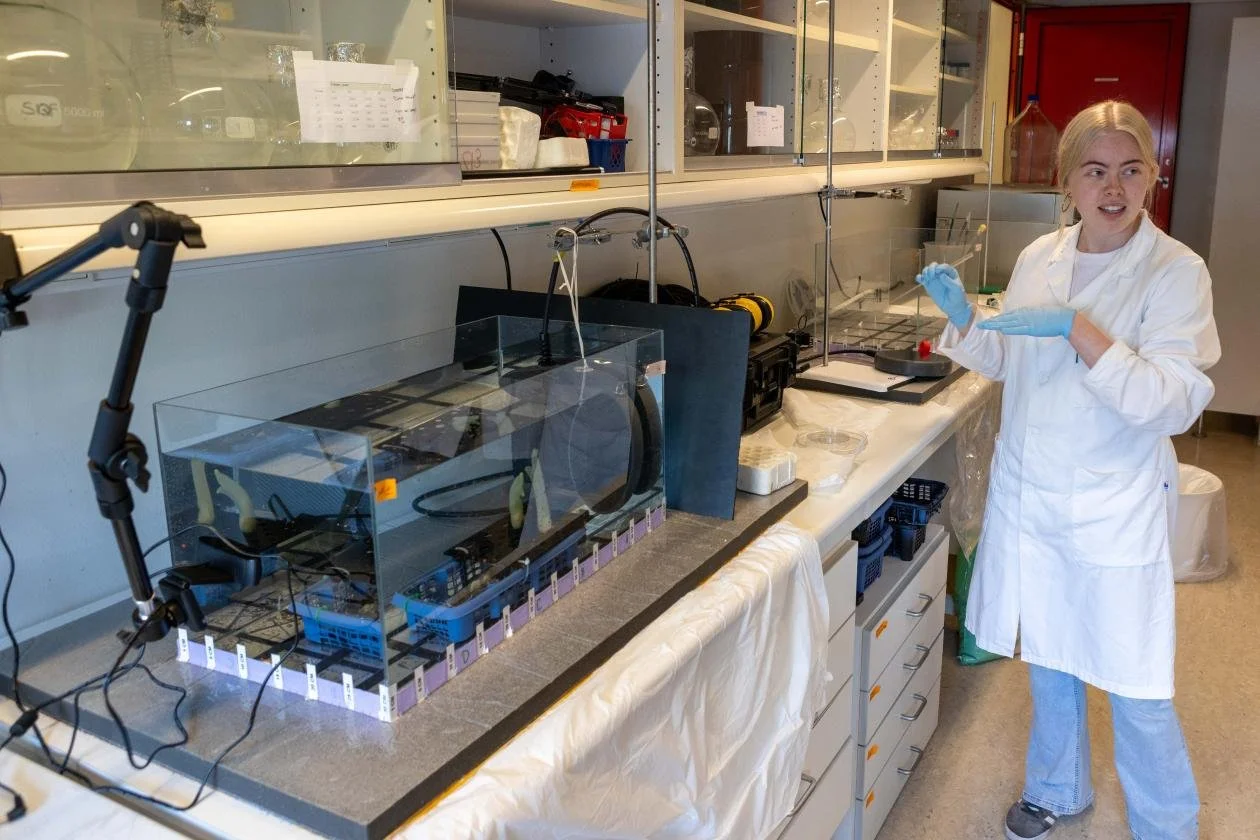Our Research Projects
How does a simple pre-vertebrate chordate brain function?
We use transient transgenesis combined with chemogenetics, calcium imaging and quantitative behavioral analysis to dissect the basic working principles of the Ciona larva nervous system.
For example we recently showed that Ciona larvae use polymodal sensory neurons to detect mechanical and chemical cues that promote or impede settlement and metamorphosis.
Ciona larva nervous system schematic. Artwork: Marios Chatzigeorgiou
You can read in the Science Connected Magazine a nice write-up on our Current Biology paper by Sofia Caetano Avritzer
Which proteins control sensory perception of Ciona intestinalis larvae?
We are investigating the function of various molecules (ion channels, transporters, G-protein coupled receptors) that may function in stimulus transduction and signal amplification in various types of sensory neurons found in the brain of Ciona larvae.
What is the composition and organization of larval behavior?
We use open source behavioral setups to image individual larvae. These videos are analyzed using machine vision and deep learning. We employ different approaches such a motif analysis, Hidden Markov Models and spatial embedding to uncover the identity of the basic building units of behavior as well as how these units are organized to generate complex behaviors.
In a recent study, we demonstrated amongst other things that Ciona larvae exhibit a rich repertoire of behaviors which can be organized into distinct modes across multiple time-scales. These behaviors are under the control of the evolutionarily conserved neuromodulators dopamine, noradrenaline and serotonin.
Animation of an animal exploring the tSNE behavioral space.
CHORDATE DEVELOPMENT
How is a chordate nervous system built? What controls the formation of the hallmark structure of all chordates the notochord?
We are pursuing developmental studies focused on the formation of evolutionarily conserved organs/tissues amongst chordates such as the notochord and the nervous system. For example, in a recent publication have shown that Anoctamin 10, is required for notochord formation.
JPI OCEAN DEUTERONOISE
How does anthropogenic noise in the sea (e.g. boat traffic) affect marine invertebrates?
We are part of a consortium which uses, accoustics, genetics, quantitative behavioral analysis and physiological studies to study the impact of underwater noise on marine invertebrates like echinoderms, cephalochordates and tunicates.
Ingrid preparing for noise experiments with Oikopleura dioica.
Sissel doing noise experiments with Ciona intestinalis.
Emma setting up noise experiments with adult Cionas (Photo credits: Marion Lebouvier)
Emma and Eldar doing larval tracking while exposing the animals to noise (Photo credits: Marion Lebouvier)
